
The Squeaky Wheel (And Rail) Gets the Grease
Written by Carolina Worrell, Senior Editor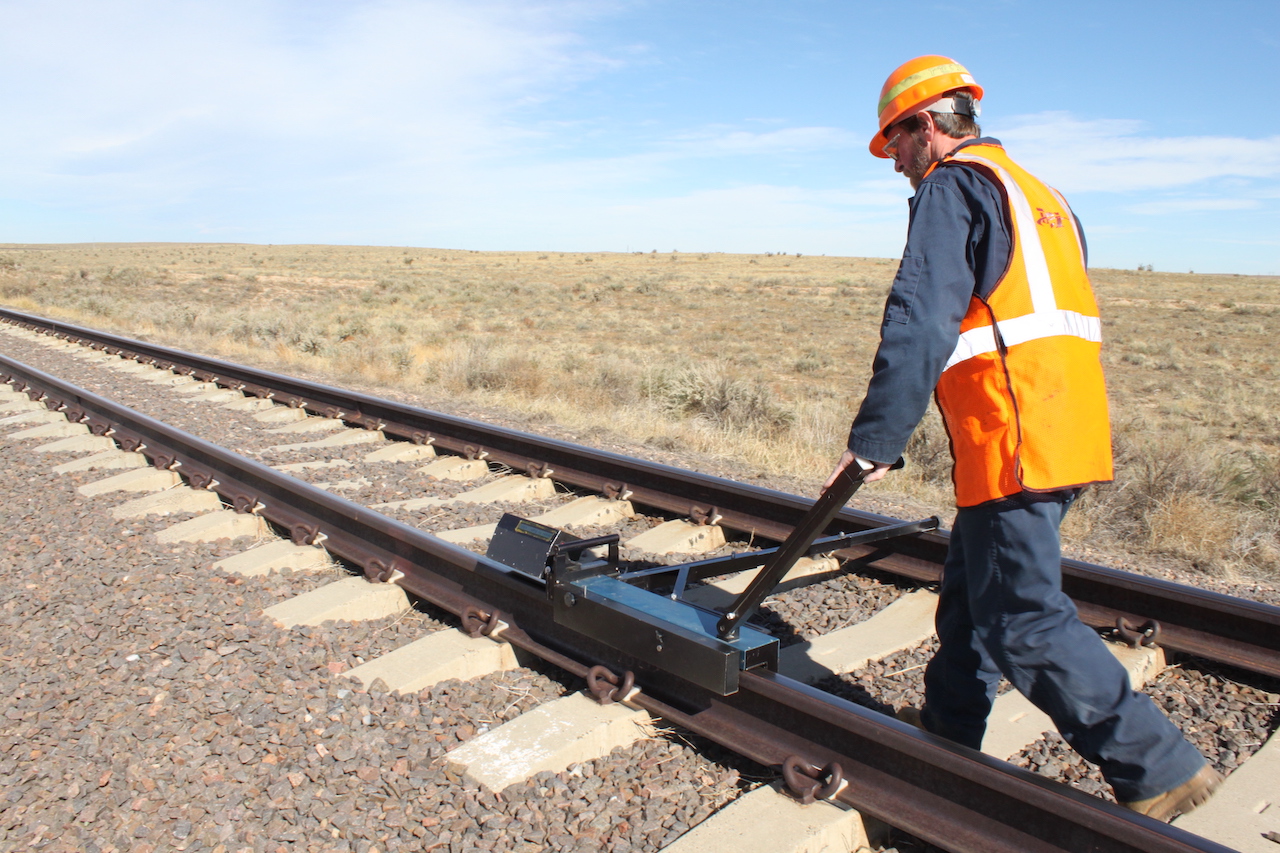
MPL worked with researchers at Kansas State University to study a wide range of commercially available biopolymer and vegetable oil lubricants. (MPL Innovations, Inc.)
RAILWAY AGE, JULY 2023 ISSUE: Wayside or onboard, methods and materials vary, but they all have the same objectives.
Lubrication and its high-tech equivalent, friction management, are important elements of the wheel/rail interface. Many wayside and onboard deployment methods are available. Suppliers RBL Inc./Robolube; MPL Innovations, Inc.; Loram Technologies, Inc.; L.B. Foster; Shell & Whitmore Reliability Solutions, LLC (SWRS); SKF USA Inc.; and TRAC Lubricants & Coatings LLC shared how they are helping freight and passenger rail maximize safety and performance with lubrication/friction management programs while reducing costs.
RBL Inc./Robolube
“Current market conditions have been favorable for the track lubrication sector,” Manager of Railroad Sales Christian Pieper tells Railway Age. “With rising fuel cost and more emphasis on safety on the rail and the communities they serve, there is ever more need to protect rail and its assets.”
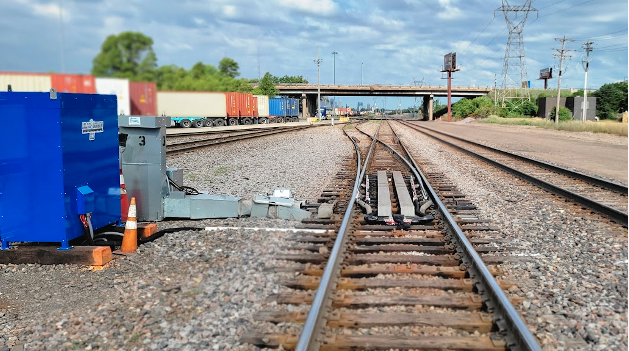
The Robolube R2K is RBL’s latest technology in wayside lubrication. (RBL)
The Robolube R2K is RBL’s latest technology in wayside lubrication. With the R2K, RBL says it has a fully heated system all the way to the application nozzle. The R2K has no train contact, so RBL can mount it at the apex of the curve for bi-directional traffic, where solid flange contact is occurring. This, the company says, allows RBL to achieve almost complete grease consumption by wheels, virtually eliminating castoff, lubrication inefficiencies and grease consumption.
RBL is applying 1.3 ounces of grease per train and laying a precise bead of grease at the gauge corner of the high rail. In recent testing of Robolube R2K on a Class I main line, the company installed a wheel count sensor to test and gather data for comparison to current systems. Over a five-day period, 64,000 axles were counted. The existing lubricator unit application rate at this site was four-fifths of a pound per 400 axles grease consumption, per information provided by the railroad, which amounts to 120 pounds of grease over the 64,000-axle timeframe.
According to RBL, the Robolube R2K Wayside Lubricator in this same scenario used only 10 pounds of grease per the 64,000-axle count. This, RBL says, is 11.9 times less grease used on track with Robolube’ s wayside applicator, along with a favorable environmental impact, less waste and money saved. In grease savings alone, the ROI for the cost difference of a Robolube R2K unit, in lieu of current lubrication systems in use, is less than one year.
Last year RBL introduced its new automated Switch Plate Lubricator. “There is a current need for railroads across the nation to mitigate service interruptions and down time due to non-switch activation,” said Pieper. “With our advanced technology, we can lubricate switch plates automatically utilizing switch point actuation. This eliminates the need for hand greasing on turnouts, crossovers, and yard switches.”
With Robolube Industries’ patent pending technology, the company says it heats the grease all the way to the designated switch plate application point. Features include user preference grease output, 20-gallon heated grease reservoir, long refill intervals, elimination of monthly lubrication by field forces and minimal maintenance. With live time updates and diagnostics, this is a “game changer” for the industry for switch plate lubrication, Pieper said. “You can lubricate from 10 to 28 switch plates depending on your turnout size and necessities.”
MPL Innovations, Inc.
MPL Innovations continues to promote its biodegradable and renewable solid polymer lubricant for the rail industry with proven fuel saving and wear reduction benefits, the company tells Railway Age. The patented NatureBlend formulation uses a combination of renewable and biodegradable polymers and vegetable oil to provide wheel flange lubrication for the rail industry.
MPL has been supplying solid lubricants to the rail industry for more than 20 years and worked closely with its customers to develop a green solution for wheel and rail lubrication. MPL worked with researchers at Kansas State University to study a wide range of commercially available biopolymers and vegetable oils to identify a combination that would provide “an improved level of lubrication and meet the requirements of the rail industry for wheel flange lubrication.”
The material meets the UNI 16028 standard for solid polymer lubricants and has been extensively tested in multiple labs and on the rails. Multiple rounds of testing at the Transportation Technology Center (TTC) in Pueblo, Colo., demonstrated the materials’ ability to reduce wheel/rail friction and fuel consumption, MPL said.
According to MPL, the goal of developing this product was to “maximize the benefit to the rail industry, while at the same time, developing a formulation that is both environmentally friendly and renewable to minimize the carbon footprint of the rail lubricant.” The solid stick formulation, MPL says, decreases the amount of contamination created using greases and oils and ensures that lubrication is provided directly to the intended point of use. The formulation travels through direct contact and ensures that only the surfaces being engaged are those being lubricated. This, the company adds, minimizes consumption, as well as the mess and contamination associated with other types of rail lubrication.
As fuel prices increase, technologies capable of reducing friction and energy consumption continue to be in demand. “We continue to work with our customers to improve the effectiveness of the lubricants and maximize the benefit they bring to the rail industry,” stated President Mike Mitrovich. “We currently produce the lubricants in full length sticks to fill the applicators with a single stick, as well as refill sticks that are half the length and are designed to nest into the leading stick to hold in place and minimize material loss.”
Loram Technologies, Inc.
In 2022, Loram debuted an updated 25-gallon/200-pound wayside tank and a modular version accommodating up to 200 gallons/1,600 pounds. “Our R&D focus has always been to continue to optimize our existing product lines and design them to be more robust, reliable, and easier to install and maintain,” said Director of Management Bruce Wise, who added that “Class I’s tend to install their systems ‘out of face,’ where short line and regional railroads tend to focus on specific curves or challenging areas where rail damage or track integrity is especially important.”
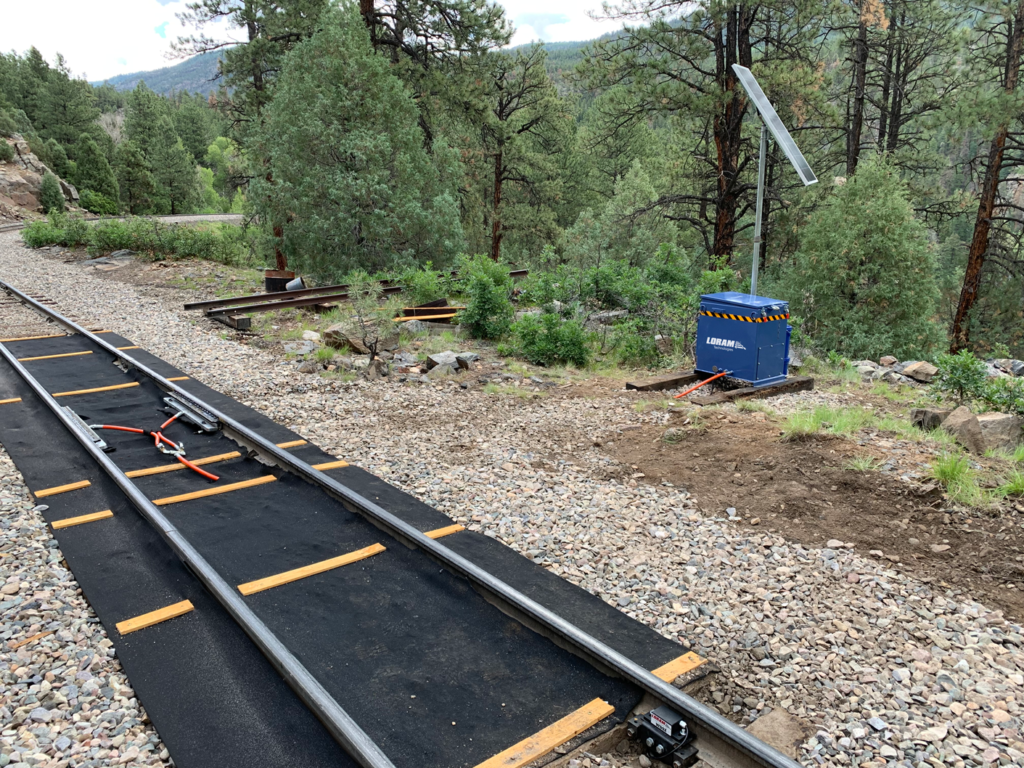
Loram in 2022 debuted an updated 25-gallon, 200-pound wayside tank. (Loram Technologies, Inc.)
To ensure system uptime, remote monitoring use is growing, Wise said. “Our latest generations are highly reliable and require very little power. Traditionally, many of the remote monitoring systems available were less reliable than the equipment they were monitoring. That is changing.”
L.B. Foster
“Freight railroads today are continuing to look to their friction management programs to maximize value in terms of fuel savings and extending rail life,” John Cotter, General Manager for Friction Management-Americas, told Railway Age. “As inflation continues to bite and with fuel one of the railroads’ largest expenses, our customers want to make sure that they’re leveraging their programs as much as possible.”
“Customers across the board are looking to improve efficiency and reduce downtime in their friction management programs,” Cotter said. “That’s why interest in remote monitoring of lubrication and friction management equipment continues for validation of program performance.” Cotter adds that use of supplemental analysis tools, such as rail wear rate measurements, can also be used to validate performance.
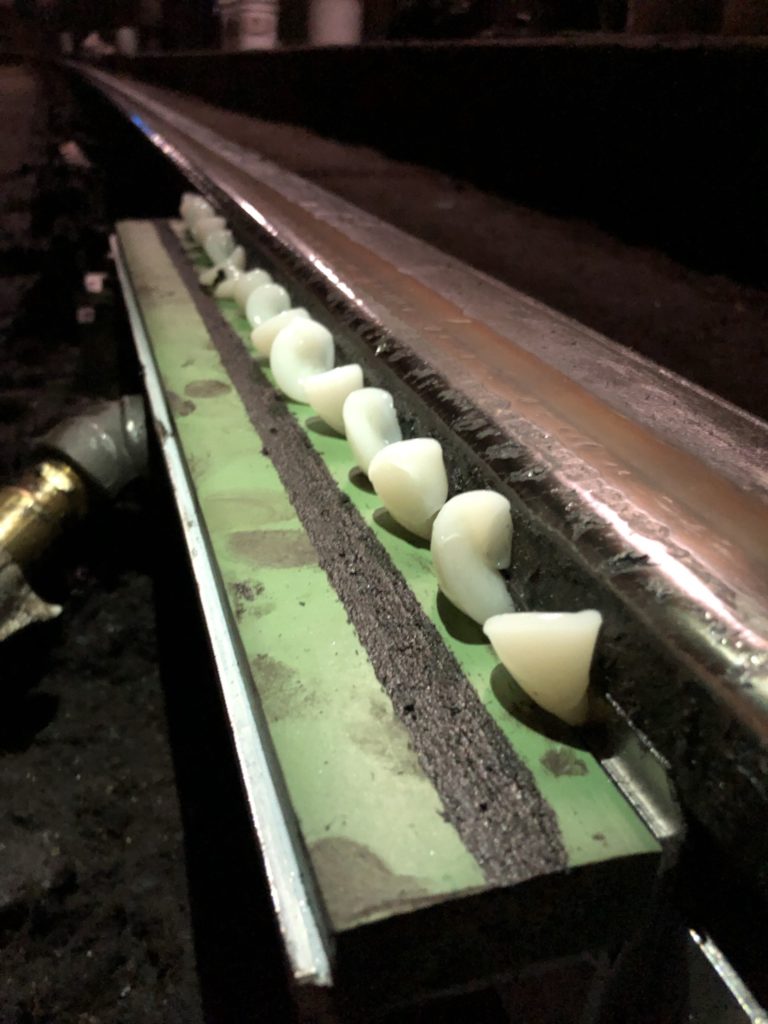
L.B. Foster FM – MC-5 Applicator Bar (L.B. Foster)
In addition, a well-run friction management program can help railroads achieve their SBTi (Science Based Targets Initiative) emission reduction goals, as well as reduce the state of stress acting on their track infrastructure, which, from a safety perspective, can reduce track spreading and derailments, according to Cotter. “In today’s Big Data environment, we can take continuous geometry car data and accurately plot out the wear rate as a function of tonnage to demonstrate performance/non-performance,” he said. “Remote performance monitoring can inform us as the operational status of the equipment, but real-time measurement of rail wear can show if the whole friction management program, including equipment, consumables and routine maintenance, is protecting our customer’s vital assets.”
“On the transit side, I think we are continuing to see a return to normal,” Cotter added. “We’re not quite there yet in terms of traffic, which does influence what we see in terms of spending on consumables and friction management in general, but we are seeing a trend in the right direction to where we were pre-pandemic.”
L.B. Foster’s patented gauge face (GF) grease applicator bars combine effective placement of lubricant to the gauge face/wheel flange interface with long life cycle value. With L.B. Foster’s patented GREASEGUIDE™, MC-5 bars maximize grease pickup and carry-down while reducing waste.
Shell & Whitmore Reliability Solutions, LLC (SWRS)
In April 2021, Shell and Whitmore formed a 50:50 joint venture, Shell & Whitmore Reliability Solutions, LLC, to provide an integrated portfolio of proprietary products for North American Class I, II and III railroads and U.S. mining companies (excluding quarries). Among them: rail curve greases, TOR (top-of-rail) friction modifiers and switch lubricants, as well as mining lubricants, plus locomotive engine oil, traction motor bearing grease and journal bearing oil, according to Technical Sales Manager Rail Kevin Adkins.
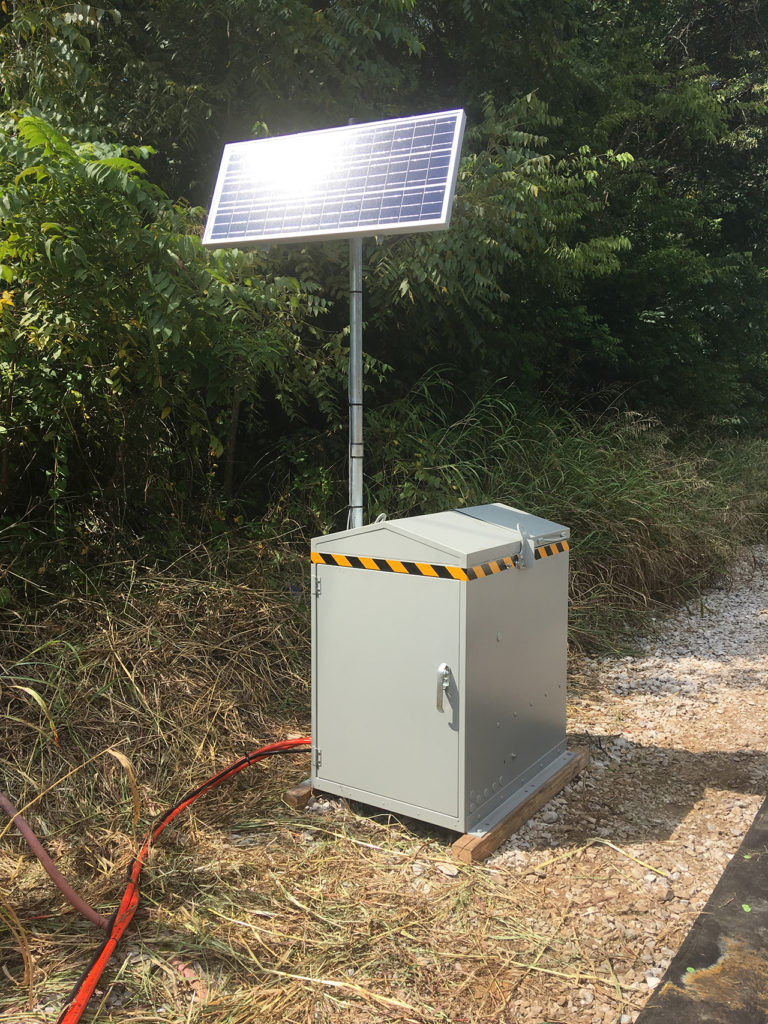
Whitmore® AccuTrack® is designed to help reduce rail wear and noise. (SWRS)
SWRS says it is seeing Class I’s look to their friction management programs to save on fuel. Programs using TOR friction management, such as Shell Gadus TOR Armor, can help reduce fuel use, according to Adkins. Another area of interest: all-season rail curve grease. Use of Shell Gadus Rail Armor M and Shell Rail Gadus S3 eliminates the need for a seasonal changeout, and there is no need to adjust output for temperature swings, Adkins noted.
SKF USA Inc.
SKF’s Lincoln wayside system utilizes precision metering devices, non-contact wheel sensors and a high-pressure pump capable of 5,000 PSI, which work together to ensure that the exact amount of lubricant is applied to the gauge face in predetermined intervals. The system is also capable of lubricating multiple railyard tracks with a single reservoir, pump and controller, reducing the overall reservoirs footprint required for the application. Remote monitoring has also been a feature of SKF’s Lincoln systems for years, providing instant updates on the health of the lubricator, according to Doug Conger, Director of Lubrication Engineering for North America.
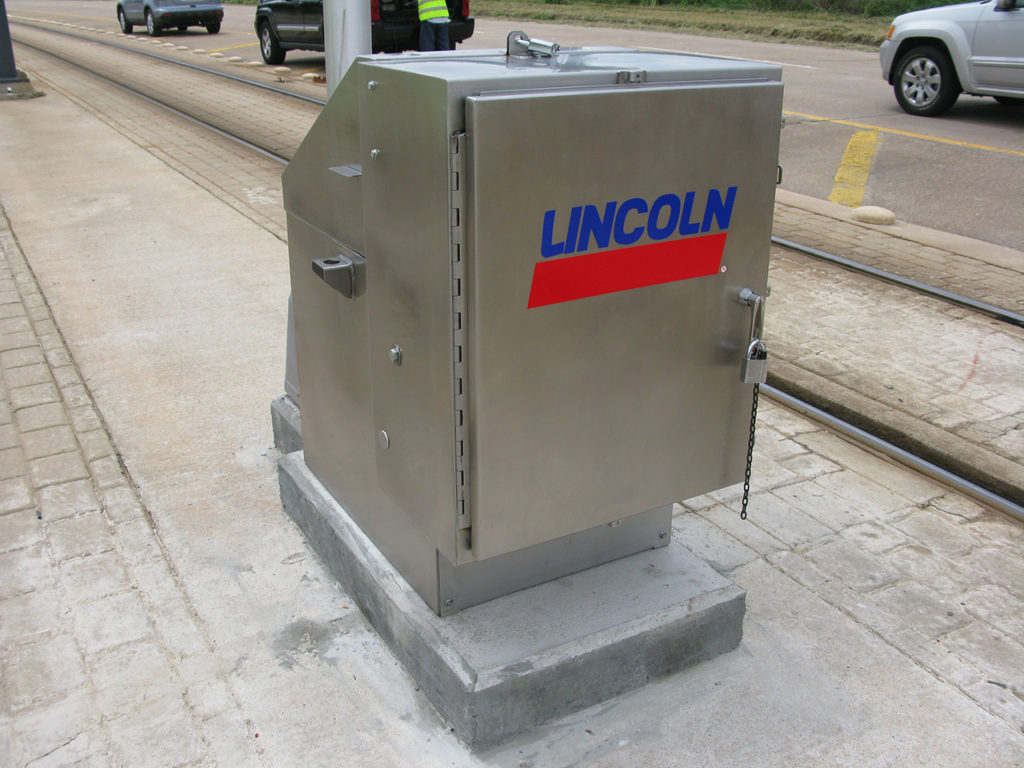
SKF-Lincoln 200-pound system. (SKF USA Inc.)
“Customers often request biodegradable lubricants to support environmental efforts,” Conger adds. “The Lincoln wayside lubrication system can pump an NLGI (National Lubricating Grease Institute) Number 2 Consistency biogrease (the food analogy is peanut butter) and can also accommodate many types of curve greases that are used in the rail industry. The precise application of these greases greatly reduces spillage by enabling the wheels to pick up and transfer the grease down the rail.”
TRAC Lubricants & Coatings LLC
Yeadon, Pa.-based TRAC offers five switch plate lubricants, among which are the biodegradable Ultra Green and Ultra Glide, and a variety of rail/flange lubricants. Winterized versions for applications in temperatures down to –30 to –40 degrees F are also available.
TRAC is now refining an MOS2 (molybdenum disulfide)-based dry film lubricant for switch plates and rail flanges to replace grease or other liquid lubricants. The company is also looking into another film application for switch plates and curved rail that would blend MOS2 and water.



